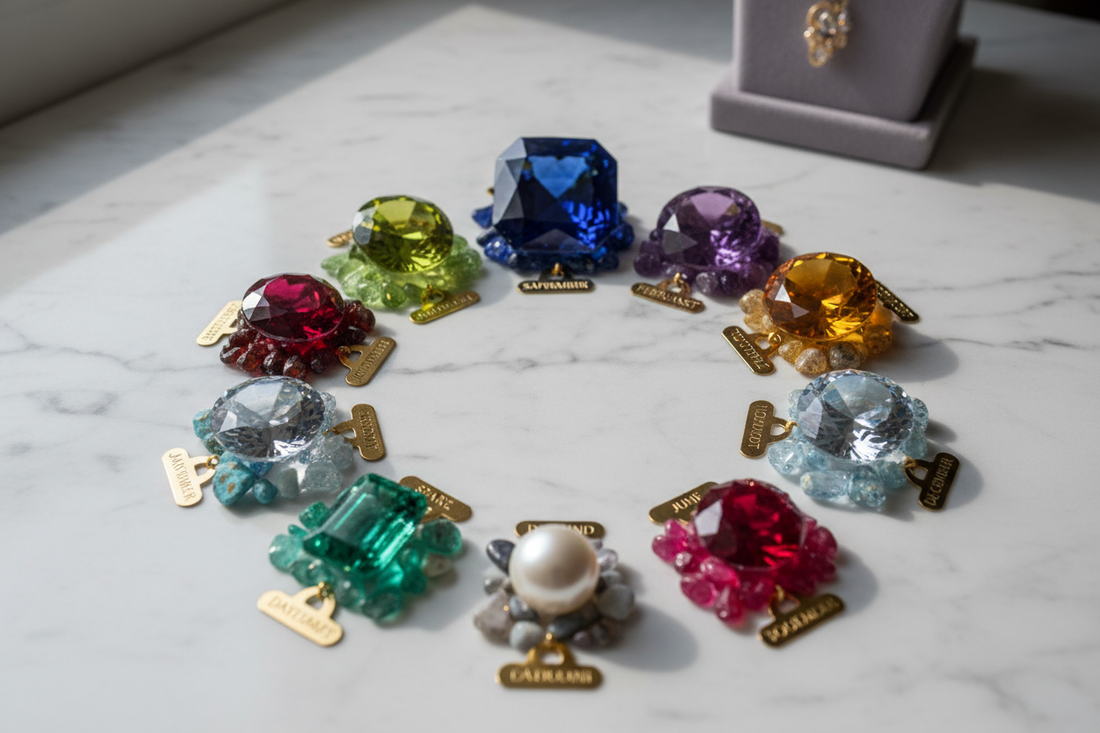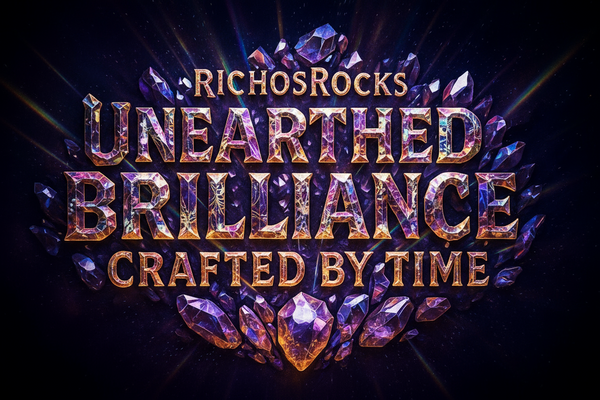
How to Tell if Your Sapphire is Real: 7 Expert Tests You Can Do at Home
🔍 How to Tell if Your Sapphire is Real: 7 Expert Tests You Can Do at Home
Professional authentication methods from Australian miners | Spot fakes, synthetics & imitations
⏱️ 7-min read | 🔬 7 proven tests | 💎 Protect your investment
🎯 QUICK ANSWER: Real sapphires have hardness 9, specific gravity 3.95-4.03, and unique inclusions. Use the scratch test, fog test, light test, and loupe inspection to identify fakes. When in doubt, get professional certification!
🔬 Quick Jump: Scratch | Fog | Light | Loupe | UV | Weight | Professional
Why Authentication Matters 💎
⚠️ COMMON FAKES: Blue glass, synthetic sapphire, blue spinel, blue topaz, treated/diffused sapphire
⛏️ EXPERT WARNING: "In 30+ years mining Queensland sapphires, I've seen every fake. Most common: lab-created synthetics sold as natural. These 7 tests catch most fakes, but always get certification for expensive stones." - RichosRocks
Test #1: Scratch Test (Hardness 9) 💪
Method: Try scratching steel with your sapphire. Real sapphires (hardness 9) will scratch glass and steel easily.
⛏️ TIP: "Use the stone to scratch glass rather than scratching the stone itself. Real sapphires scratch glass without damage." - RichosRocks
✅ Real: Scratches glass, NOT scratched by steel | ❌ Fake: Scratched by steel
Test #2: Fog/Breath Test 💨
Method: Breathe on the sapphire. Real sapphires disperse fog in 1-2 seconds. Glass lingers 4-5+ seconds.
💎 NOTE: "Natural sapphires have excellent thermal conductivity. This test catches glass fakes but not high-quality synthetics." - RichosRocks
Test #3: Light/Transparency Test 🔦
Method: Hold sapphire to bright light. Look for color zoning, inclusions, and growth patterns.
⛏️ INSIGHT: "Natural Queensland sapphires show color zoning - different color intensities. Perfectly uniform color is suspicious. Our parti-colored sapphires show dramatic green, blue, yellow zones!" - RichosRocks
🚨 Red Flags: Round air bubbles (glass), perfectly uniform color (synthetic), curved growth lines (lab-created)
Test #4: Loupe/Magnification Test 🔍
Method: Use 10x loupe to examine inclusions and internal features.
🔬 PROFESSIONAL INSIGHT: "Natural sapphires show 'silk' - fine needle-like rutile inclusions. This proves natural formation. Synthetics are TOO clean. Queensland sapphires often have fingerprint-like inclusions - these 'flaws' prove authenticity!" - RichosRocks
✅ Good signs: Silk, fingerprint inclusions, color zoning | ❌ Bad signs: Air bubbles, curved lines, too perfect
Test #5: UV Light Test 💡
What You're Testing: Fluorescence under ultraviolet light
What You Need: UV flashlight (blacklight) - available online for $10-20
How to Do It:
- Take the sapphire to a dark room
- Shine UV light (both longwave and shortwave if available) on the stone
- Observe any glow or color change
Results:
| UV Reaction | What It Means |
|---|---|
| ✅ No fluorescence or very weak | LIKELY REAL - Natural sapphires typically inert |
| ⚠️ Weak orange/red glow | POSSIBLY REAL - Some natural sapphires show this |
| ❌ Strong chalky blue/green glow | LIKELY FAKE - Synthetic or treated |
💎 UV TESTING REALITY: "Most natural sapphires are inert under UV - they don't glow. Some show weak orange fluorescence. Strong, chalky fluorescence usually indicates synthetic sapphires or heavy treatment. However, this test isn't definitive - some synthetics are also inert. Use it as one piece of evidence, not the final answer." - RichosRocks
⚠️ Note: This test is helpful but not conclusive. Some natural sapphires fluoresce, some synthetics don't.
Test #6: Specific Gravity/Weight Test ⚖️
What You're Testing: Density (specific gravity should be 3.95-4.03)
What You Need: Precise scale, water, container, calculator
How to Do It (Water Displacement Method):
- Weigh the sapphire in air (write down weight A)
- Fill container with water, place on scale, zero the scale
- Suspend sapphire in water without touching sides (write down weight B)
- Calculate: Specific Gravity = A ÷ B
Results:
| Specific Gravity | Gemstone | Verdict |
|---|---|---|
| 3.95 - 4.03 | Sapphire (natural or synthetic) | ✅ REAL SAPPHIRE |
| 2.4 - 2.8 | Glass | ❌ FAKE |
| 3.5 - 3.7 | Blue Topaz | ❌ NOT SAPPHIRE |
| 3.5 - 3.8 | Blue Spinel | ❌ NOT SAPPHIRE |
⚖️ WEIGHT TESTING: "Specific gravity testing is very accurate for identifying the type of stone. However, it can't distinguish natural from synthetic sapphires - both have the same density (3.95-4.03). This test is excellent for catching glass, topaz, or spinel imitations, but you'll need other tests to confirm natural vs lab-created." - RichosRocks
⚠️ Limitation: Can't distinguish natural from synthetic sapphires (both have same SG)
Test #7: Professional Gemological Testing 🏆
What It Includes: Advanced laboratory analysis
Professional Tests:
- 🔬 Microscopic analysis: Detailed inclusion study
- 📊 Spectroscopy: Chemical composition analysis
- 💡 Refractive index: Precise optical properties
- ⚖️ Specific gravity: Accurate density measurement
- 🌈 Pleochroism test: Color change in different directions
- 🔍 Origin determination: Geographic source identification
✅ WHEN TO GET PROFESSIONAL CERTIFICATION:
- 💰 Sapphire worth $500+ (always certify expensive stones!)
- 💍 Engagement ring or important jewelry
- 📜 Need proof for insurance
- 🤔 Home tests give conflicting results
- 💎 Buying from unknown seller
- 🎁 Inherited or estate jewelry
🏆 CERTIFICATION RECOMMENDATION: "For any sapphire over $500, get professional certification. It costs $50-150 but protects a much larger investment. for expensive stones, independent lab certification (GIA, AGL, Lotus) is worth it. They can definitively determine natural vs synthetic, treatment status, and even geographic origin." - RichosRocks
Reputable Gemological Labs:
- 🏆 GIA (Gemological Institute of America) - Most recognized worldwide
- 🏆 AGL (American Gemological Laboratories) - Colored stone specialists
- 🏆 Lotus Gemology - Sapphire experts
- 🏆 GRS (Gem Research Swisslab) - International standard
- 🇦🇺 GAA (Gemmological Association of Australia) - Australian stones
Cost: $50-$150 for basic certification, $150-$500 for detailed origin report
Learn more: Complete Authentication Guide
🎯 Summary: How to Authenticate Your Sapphire
| Test | What It Catches | Difficulty |
|---|---|---|
| 1. Scratch Test | Glass, soft imitations | Easy (but risky) |
| 2. Fog Test | Glass, low-quality fakes | Very Easy |
| 3. Light Test | Glass, some synthetics | Easy |
| 4. Loupe Test | Glass, synthetics | Medium |
| 5. UV Test | Some synthetics, treatments | Easy |
| 6. Weight Test | Glass, topaz, spinel | Medium |
| 7. Professional Test | EVERYTHING (definitive) | Requires lab |
💡 BEST APPROACH: Use multiple tests! No single test is 100% conclusive. Combine 3-4 home tests, and if the stone is valuable, get professional certification.
❓ Frequently Asked Questions
Q: Can synthetic sapphires pass these tests?
A: Some can! Synthetics are chemically identical to natural sapphires, so they pass hardness, fog, and weight tests. Only loupe examination (curved growth lines) and professional testing can definitively identify them.
Q: Are synthetic sapphires worthless?
A: Not worthless, but worth 80-90% less than natural. A $2,000 natural sapphire might be $200-400 if synthetic. They're real sapphire, just lab-created.
Q: How can I tell natural from synthetic?
A: Look for curved growth lines (synthetic) vs straight lines (natural) under magnification. Natural stones have irregular inclusions; synthetics are too perfect. Professional testing is most reliable.
Q: What are the most common sapphire fakes?
A: Blue glass (cheapest), synthetic sapphire (most common), blue spinel, blue topaz, and heavily treated/diffused sapphires.
Q: Is it worth getting certification?
A: For stones over $500, absolutely! Certification costs $50-150 but protects a much larger investment. Learn more →
Q: Can treated sapphires be detected at home?
A: Difficult. Heat treatment (common and acceptable) is nearly impossible to detect without professional equipment. Diffusion treatment sometimes shows color concentration at facet junctions.
Q: Where can I buy guaranteed authentic sapphires?
A: Buy from reputable dealers who provide certification. We mine our own Queensland sapphires and provide authenticity documentation.
Q: What's the easiest test to do first?
A: Fog test! Breathe on the stone - if fog disappears in 1-2 seconds, it's likely real. If it lingers 4-5+ seconds, it's probably glass.
🛒 Shop Certified Authentic Sapphires
Buy with confidence - every stone comes with documentation:
- 🇦🇺 Queensland Sapphires - Mined by us, authentic
- 💎 All Loose Gemstones - 100% natural
- 🎂 Birthstone Collection - September sapphires
- ⛏️ Rough Sapphire Parcels - Direct from mine
📚 Learn More
- Complete Authentication Guide
- Gemstone Grading Guide
- Our Mining Story
- Gemstone Education
- Why Choose RichosRocks
📞 Questions About Your Sapphire?
📧 richosrocksstore@gmail.com | 📞 0477407369 | 📍 Sapphire, Queensland, Australia
Contact us | FAQ | About Us
💎 Buy Authentic Queensland Sapphires
Every stone comes with: treatment disclosure, quality assessment. Buy with confidence! 💙
🛒 Shop Related Products
Ready to start your gemstone journey? Browse our curated collection:
- 💎 Queensland Sapphire Rough Parcel 204ct - Investment grade Australian sapphires
- 💜 Amethyst Teardrop 3.2ct - February birthstone, rich purple
- 💙 Blue Topaz Matched Pair 5.3ct - December birthstone, brilliant blue
- 💎 Queensland Zircon 0.3ct - Rare Australian gemstone
- ❤️ Red Garnet Matched Pair 1.85ct - January birthstone
